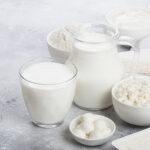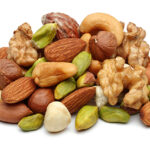DAIRY PRODUCTS AND RISK OF PREDIABETES: FINDINGS FROM THE AUSDIAB STUDY

Diet plays an important role in the prevention and management of prediabetes (impaired fasting glycaemia or impaired glucose tolerance) and type 2 diabetes, and a growing body of evidence suggests a possible protective effect of dairy foods, although the findings are not consistent.
The AusDiab study is a national, population-based survey of over 11,000 Australian adults (over 25 years of age). Participants were enrolled in the study in 1999-2000 and had follow-up measurements in 2004-2005 and 2011-2012. The aim of the study was to determine the prevalence and incidence of diabetes, obesity, hypertension, and kidney disease in Australia, and the risk factors for these conditions.
Last year, researchers published the findings of a study involving almost 4,900 AusDiab participants looking at the relationship between dairy food consumption and risk of prediabetes. Participants had normal glucose tolerance at the start of the study and were reassessed at the 5 year and 12-year follow-ups. They were diagnosed with prediabetes if they had an elevated fasting glucose or 2-hour glucose level according to the WHO criteria (fasting glucose 6.1-6.9 mmol/L and 2-hour glucose 7.8 to 11.0 mmol/L).
The researchers looked at participants’ total intake of dairy foods and intake of different types of dairy foods, including milk, yoghurt, cheese, ice-cream and fermented dairy. They also explored whether there were any differences between high and low-fat dairy foods.
After adjusting for other dietary factors associated with diabetes risk, a higher intake of high fat dairy foods and high fat milk were both associated with a statistically significant but small reduction in risk of prediabetes. Total cheese intake showed the greatest reduction, with a 26% lower risk of prediabetes. No association was found for low fat dairy, total milk, total yoghurt, low-fat cheese and ice-cream.
These results differ from those of some other population-based studies that show a reduced risk of type 2 diabetes with higher intakes of low-fat dairy and yoghurt. The findings are also different from a previous analysis of the AusDiab study, which showed an inverse association between low-fat milk intake and type 2 diabetes. The researchers suggest a few possible reasons for the inconsistency in their findings including the possibility that the effect of dairy foods vary according to an individual’s insulin sensitivity or metabolic health, and reverse causality, where people with risk factors for prediabetes and type 2 diabetes may make dietary changes such as switching from high-fat to low-fat dairy foods. One limitation of the study is that the researchers only assessed dairy intake at the start of the study and didn’t reassess this during the study follow-up period.
The researchers conclude that further studies are needed, particularly randomised controlled trials, to determine the role of different dairy types and dairy fat content in the development of type 2 diabetes. They also suggest that future observational studies gather more specific details on the fat, sugars and protein content of different milk and yoghurt types, as the food frequency questionnaires used in many population-based studies aren’t able to provide this level of detail.
Read more:
- Slurink and colleagues. Dairy Product Consumption and Incident Prediabetes in the Australian Diabetes, Obesity, and Lifestyle Study With 12 Years of Follow-Up. J Nutr. 2023

Dr Kate Marsh is an is an Advanced Accredited Practising Dietitian, Credentialled Diabetes Educator and health and medical writer with a particular interest in plant-based eating and the dietary management of diabetes and polycystic ovary syndrome (PCOS).
Contact: Via her website www.drkatemarsh.com.au







